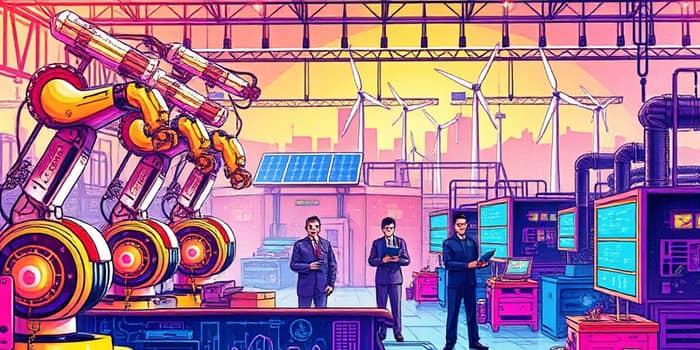
As the global economy enters 2025, the manufacturing sector is rapidly shifting from crisis management to ambitious expansion. Industry leaders are seizing new opportunities by blending time-tested methods with cutting-edge technology. This article unpacks the eight pivotal trends driving momentum and offers practical insights for executives, engineers, and policymakers alike.
After a period of survival-focused operations, manufacturers are embracing proactive growth strategies in 2025. The emphasis has shifted toward classic strategic planning: pinpointing attractive markets, developing clear roadmaps, and enforcing disciplined execution.
Key actions include:
By prioritizing operational simplification through SKU rationalization, companies unlock capital and talent for future investments.
Digital technologies continue to reshape production floors. From AI algorithms to IoT networks and 5G connectivity, manufacturers are constructing agile, data-driven environments known as smart factories. A comprehensive digital transformation roadmap is now indispensable.
Central to success is workforce upskilling. Organizations that invest in training for data literacy, machine learning, and systems integration are building comprehensive digital transformation roadmaps that outpace competitors.
Environmental stewardship has evolved from compliance checklist to brand enhancer. Customers and corporate buyers demand greener goods, and leading firms highlight their sustainable practices as competitive advantages.
Energy optimization, waste reduction, and renewable sourcing are top of mind. Manufacturers are exploring solar arrays, wind partnerships, and advanced energy management systems, demonstrating energy optimization and renewable integration across operations.
The pandemic and rising geopolitical tensions have exposed supply chain vulnerabilities. In response, companies are accelerating reshoring and supply chain diversification efforts. By relocating critical production closer to home, firms mitigate risk from tariffs, material shortages, and transit disruptions.
ASEAN nations and India are gaining traction as alternative manufacturing hubs, balanced against reshoring trends in North America. Diversified supplier networks and real-time analytics platforms are key to maintaining uninterrupted flows.
Labor shortages are acute. In the US alone, construction job openings averaged 382,000 per month in 2023–2024. Manufacturing must adapt through automation, robotics, and enhanced talent programs.
Strategies include:
Companies embracing advanced robotics and automation adoption are seeing measurable gains in throughput and quality.
Data infrastructure is no longer optional. Manufacturers investing in secure analytics frameworks gain actionable insights into production efficiency, demand forecasting, and supplier performance.
Cybersecurity, data privacy, and compliance protocols must evolve alongside connectivity. Executives view data-driven decision-making frameworks as foundational to achieving operational excellence.
Regulatory landscapes are influencing investment decisions. The US Inflation Reduction Act and CHIPS Act offer incentives for electrification, renewable installations, and onshoring semiconductor production.
Market watchers note that policy shifts can reshape cost structures overnight. Manufacturers that proactively align capital budgets with incentive programs gain an edge in regulatory incentives driving energy transitions.
Regional divergence defines the 2025 outlook. The US and China project stable or robust gains, while parts of Europe face production declines. India and emerging Asian economies emerge as bright spots for capacity growth.
Amid macroeconomic volatility, industry leaders are betting on technology adoption, supply chain innovation, and sustainability to sustain momentum. The path forward requires balancing ambition with agility and strategic foresight.
Manufacturing in 2025 stands on the cusp of transformation. Leaders integrating strategic planning, digital innovation, and sustainability will shape the next wave of growth. By embracing continuous innovation through automation and leveraging data as a core asset, organizations can navigate uncertainty and capitalize on emerging opportunities.
The momentum is building. Now is the time for executives to refine their roadmaps, empower their workforces, and invest boldly in technologies that will define the future of production.
References













